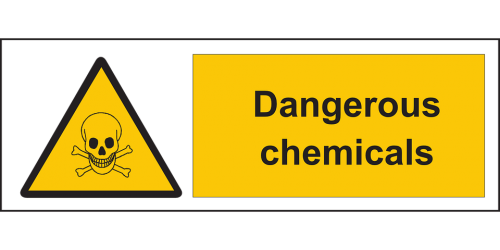Health and Safety in Schools
The emphasis on the well-being of students within the educational environment has never been more important. Schools play a pivotal role in not only imparting knowledge but also ensuring the health and safety of their students.
Establishing an effective learning environment hinges on prioritising the physical and emotional welfare of students. Beyond mere legal compliance, maintaining health and safety standards in schools develops an environment conducive to focused learning, free from potential distractions or dangers. A secure setting not only safeguards the well-being of students and staff but also nurtures both academic and personal development.
Common Health and Safety Hazards in Schools
Identifying potential health and safety hazards within the school environment is the first step towards minimising risks. These hazards can range from physical dangers, such as slippery floors and obstructed fire exits, to environmental factors, including poor air quality and exposure to hazardous substances. Additionally, the increase of technology in educational settings introduces concerns over digital safety and ergonomics.
Biological hazards also pose a significant risk in schools, where illnesses can rapidly spread if not properly managed. This includes common infections like the flu, as well as more serious contagious diseases. Psychological hazards, such as bullying and stress, similarly demand attention, as they can significantly impact students’ mental health and well-being.
Addressing these hazards requires a comprehensive approach that encompasses physical safety measures, health education, and the promotion of a positive school culture. By recognising and actively managing these risks, schools can create an environment where students are protected from harm, allowing them to focus on their educational activities.
Health and Safety Training for School Staff
Equipping school staff with the knowledge and skills to manage health and safety issues is fundamental to the well-being of students. Training programmes should cover a broad spectrum of topics, from basic first aid and emergency evacuation procedures to more specialised subjects such as handling hazardous materials and addressing psychological hazards. Such training ensures that staff are prepared to respond effectively to a variety of situations, thereby minimising risks to students and themselves.
Ongoing professional development in health and safety matters is also essential. As new hazards emerge and regulations evolve, continuous learning enables staff to stay informed and adapt their practices accordingly. This commitment to professional growth reflects the dynamic nature of health and safety management in schools, where the goal is not just to react to incidents but to anticipate and prevent them.
Collaboration with external experts and agencies can further enhance the effectiveness of staff training. By tapping into a wider pool of knowledge and resources, schools can access the latest insights and innovations in the field of health and safety, enriching the training provided to their staff.
Creating a Health and Safety Policy for Schools
A comprehensive health and safety policy is the foundation of a school’s commitment to safeguarding its community. This document outlines the principles and procedures that govern how health and safety issues are managed, serving as a guide for staff, students, and parents alike. Crafting a robust policy requires careful consideration of the specific needs and circumstances of the school, ensuring that the measures proposed are both practical and effective.
- Policy development process: this should be collaborative, involving input from teachers, administrators, parents, and students.
- Regular review and updating of the policy: this is crucial to adapt to changes in the school environment and emerging challenges.
- Improvement: demonstrates a proactive approach to health and safety management, ensuring alignment with best practices and legal requirements.
Implementing Healthy Initiatives in Schools
Encouraging health and wellness within schools is essential, and health promotion initiatives play a key role in achieving this. These initiatives cover a range of topics, from nutrition and physical activity to mental health and substance abuse prevention. By seamlessly integrating health promotion into everyday school life, students can develop the knowledge and behaviours needed to lead healthy lives.
Collaborating with local health organisations and professionals can greatly enhance the reach and impact of these initiatives. These partnerships offer access to additional resources and expertise, enabling schools to offer a diverse array of programs and activities aimed at promoting health and well-being.
Online Safety
Conclusion
The well-being of students is paramount to their success, both academically and in their personal lives. Ensuring this well-being requires a comprehensive approach to health and safety in schools, encompassing legal compliance, risk management, and the promotion of healthy lifestyles. By prioritising the health and safety of their students, schools create environments where learning and growth can occur without concerns over physical or emotional harm.The journey towards achieving this goal is ongoing, demanding continuous effort and adaptation
In conclusion, the question remains: why is health and safety important in schools? The answer lies in the fundamental belief that every student deserves to learn in an environment that supports their overall well-being. It is through the diligent application of comprehensive health and safety measures that this belief can be brought to life, ensuring a brighter future for all students.
You’ll find a large range of health and safety products and education products on our website.






